Kairouan is the fourth holiest city in Islam (after Mecca, Medina, and Jerusalem) and the oldest Arab settlement in Tunisia. It was founded in the 7th century AD, and soon became capital of the Arab region of North Africa known as the Maghreb. But while Kairouan’s era of political dominance only lasted a few centuries, its religious significance remains strong thanks to the Great Mosque. This is the top attraction in town, but there are several other unique things to do in Kairouan. It’s a fascinating UNESCO-listed destination that needs to be on your Tunisia itinerary. Here are the best places to visit in Kairouan.
The Great Mosque of Kairouan
Dating to the city’s founding in the 7th century, Kairouan’s Great Mosque is the oldest and most important Muslim place of worship in North Africa. The impressive complex covers over 10,000 square meters and is surrounded by fortress-like walls.
Building materials were traded from around the Mediterranean, and nothing went to waste. As a result, you’ll see mismatched marble columns, stones with Latin text, and the odd Byzantine cross. My guide pointed out a Roman eagle carved into one of the pediments. This unique blend of architectural details is quite special.
The prayer hall is laid with carpets of rich reds and blues. During the scorching summer months, prayer mats are wrapped around the bases of the marble columns to keep them cool for services. Only Muslims are allowed to enter the sacred space, but the doors are left open so non-Muslims can admire its beauty.
Make sure you are dressed appropriately to enter the Great Mosque complex. No shorts or bare shoulders are permitted, and women must cover their hair with a headscarf. Robes are available inside the entrance if needed.
Medina of Kairouan
Kairouan’s old town, or medina, grew up behind the walls of the Great Mosque and seems to have changed little over the centuries. Shops line the main thoroughfare, but the farther you go along the winding side streets, the quieter it becomes.
If the medina looks familiar, that’s because it was featured in one of the greatest movies of all time – Indiana Jones and the Raiders of the Lost Ark. Most of the scenes depicting 1930s Cairo were actually filmed in Kairouan. City officials agreed to temporarily take down all TV antennas for historical accuracy. (And presumably a hefty payment.) It was a little surreal to walk in the footsteps of Harrison Ford, one of my childhood heroes.
House of the Governor
Once home to Kairouan’s 18th century Ottoman bey, this grand mansion is now a carpet emporium. This region produces some of the finest carpets in Tunisia. You can see works in progress on looms in one of the shops many rooms. The rest of the space is used to display the finished products. Each carpet can take weeks or months to make, depending on its size and quality.
When you enter the shop, you’ll be led to the main show room where a wide variety of carpets will be laid out before you. You’ll be given mint tea to drink and local snacks to nibble on. Since this is a government-run store, the prices are fixed. You can shop stress-free, without the need to haggle. Foreign credit cards are accepted, and the carpets will be folded into easy-to-carry squares.
After the sales pitch concludes, be sure to head up to the tiled rooftop terrace for a look at the city skyline.
Bir Barouta
According to local legend, a holy man traveling through Kairouan in the 13th century was desperate for water. As he prayed for relief, his dog dug a hole in the sand and water gushed forth. Some believe this spring reaches all the way to Mecca. Another story says that this spring was actually discovered back in the 7th century by the city’s founder when he stumbled on a golden chalice.
A well was built at the site, with camels operating a water wheel to provide an endless flow of drinking water. Today, visitors can watch (for a small fee) as a camel circles the well and fills buckets. I saw people drinking from them with communal cups, but that seems like a recipe for intestinal distress.
Zaouia of Sidi Sahab (Mosque of the Barber)
One of the most beautiful places in Kairouan is the Zaouia of Sidi Sahab. This stunning mausoleum was built in honor of Abu Zama el-Belaoui, a companion, or “sahab,” of the Prophet Mohammed. Sidi Sahab always carried with him three hairs from the Prophet’s beard, hence his nickname of “the barber.”
After admiring hallways and anterooms decorated with tiles, columns, and intricate carvings, you’ll come to a central courtyard. Sidi Sahab’s tomb is located in one of the rooms around the square. Non-Muslims aren’t allowed to enter, but the guard outside will take pictures on your phone for a small donation. A few dinar is fine.
Aghlabid Basins
When the Aghlabid dynasty came to power in the 9th century, they looked for a solution to Kairouan’s constant lack of water. They built 15 reservoirs on the outskirts of town, two of which survive. An aqueduct was added to bring in water from a mountain spring some 36 kilometers away. While they are mainly decorative today, the Aghlabid basins were once part of the most significant hydraulic system of the Maghreb.
If you are looking for a good place to eat in Kairouan, I recommend El Brija Restaurant. It’s conveniently located near the Great Mosque, and serves tasty Tunisian classics like salad mechouia and lamb couscous.
Ready to visit Kairouan Tunisia?
Save this blog for easy reference!
If you want to see more of Tunisia, check out the incredible Roman ruins of Dougga in the northern part of the country.
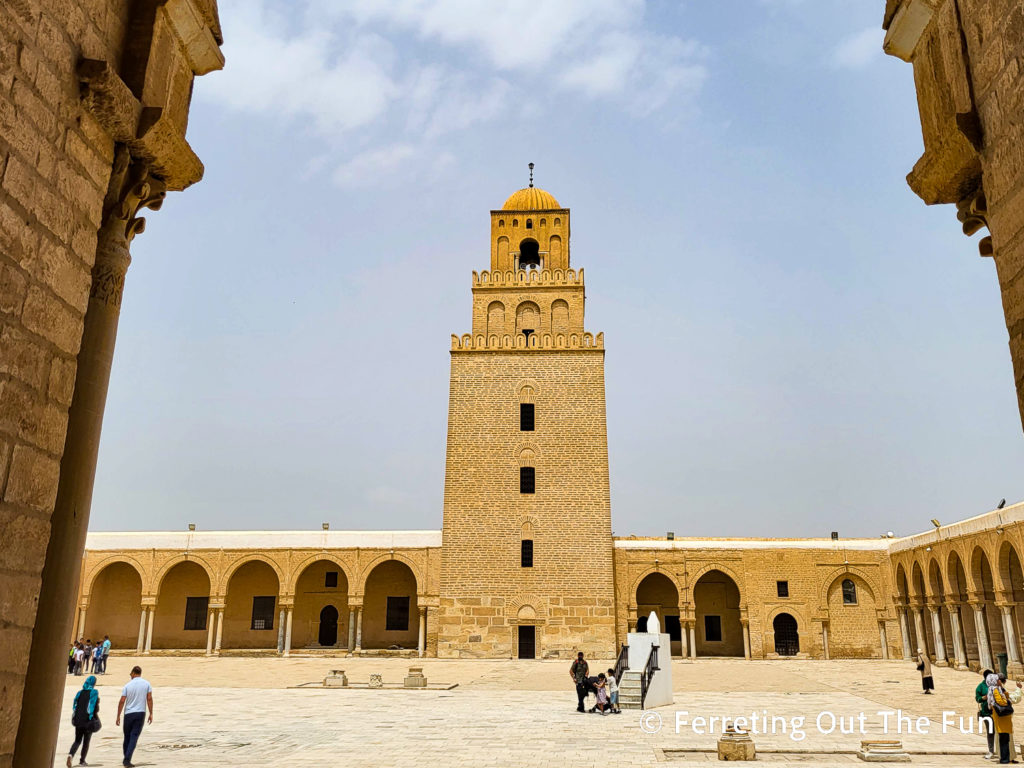
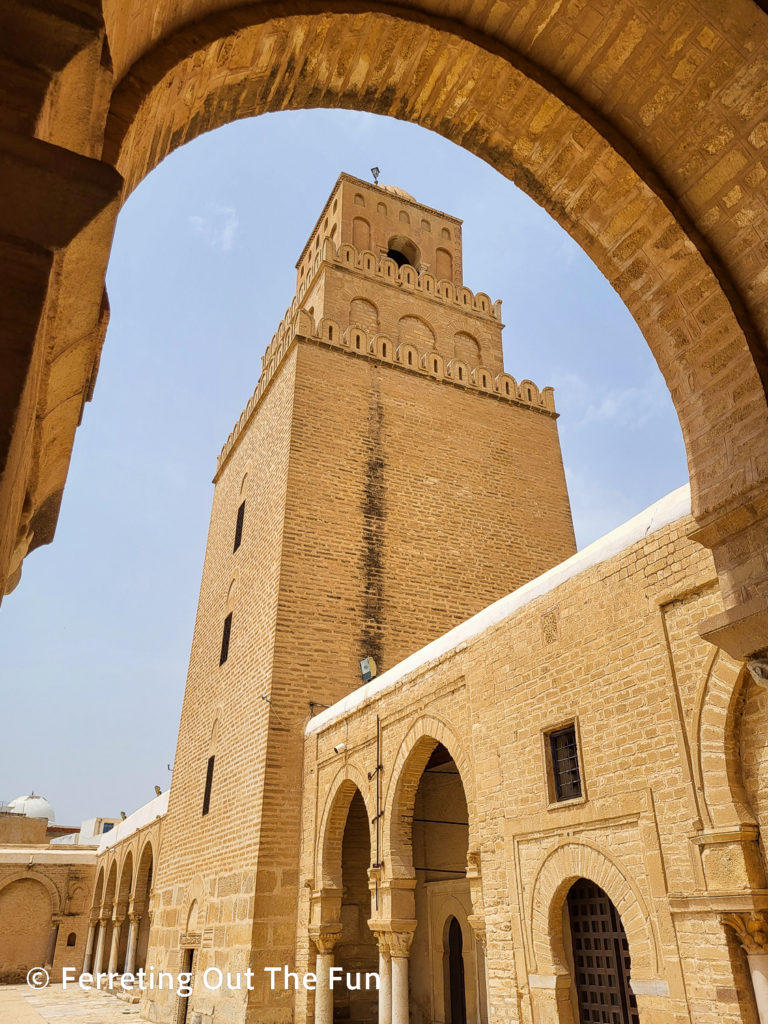
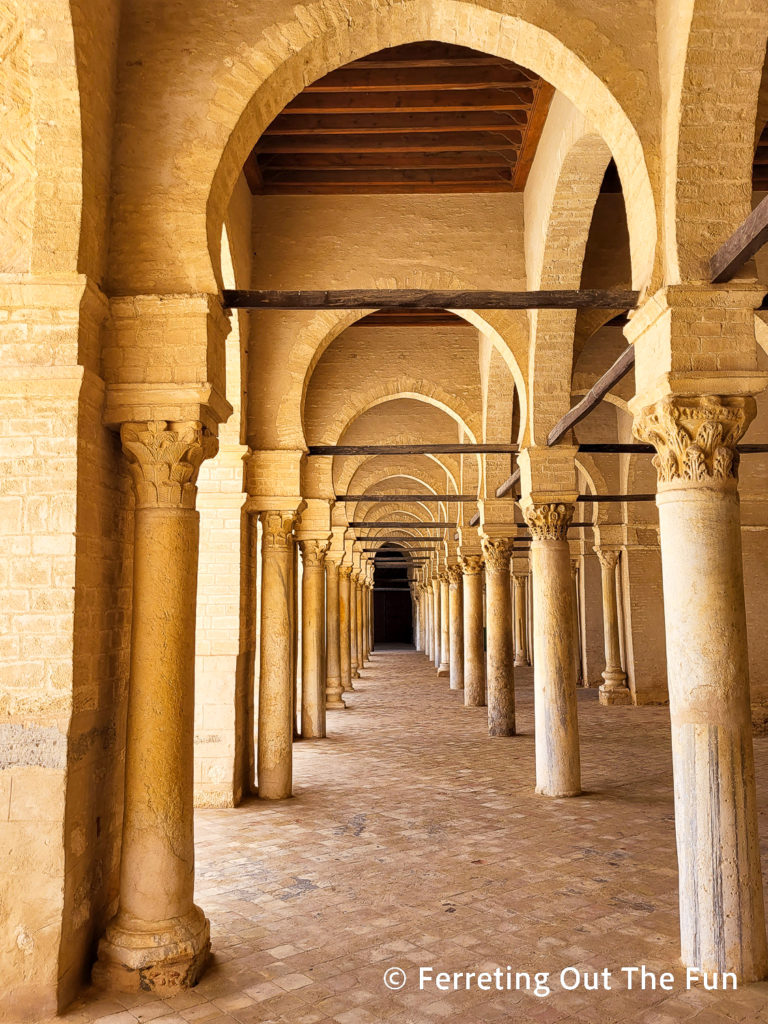
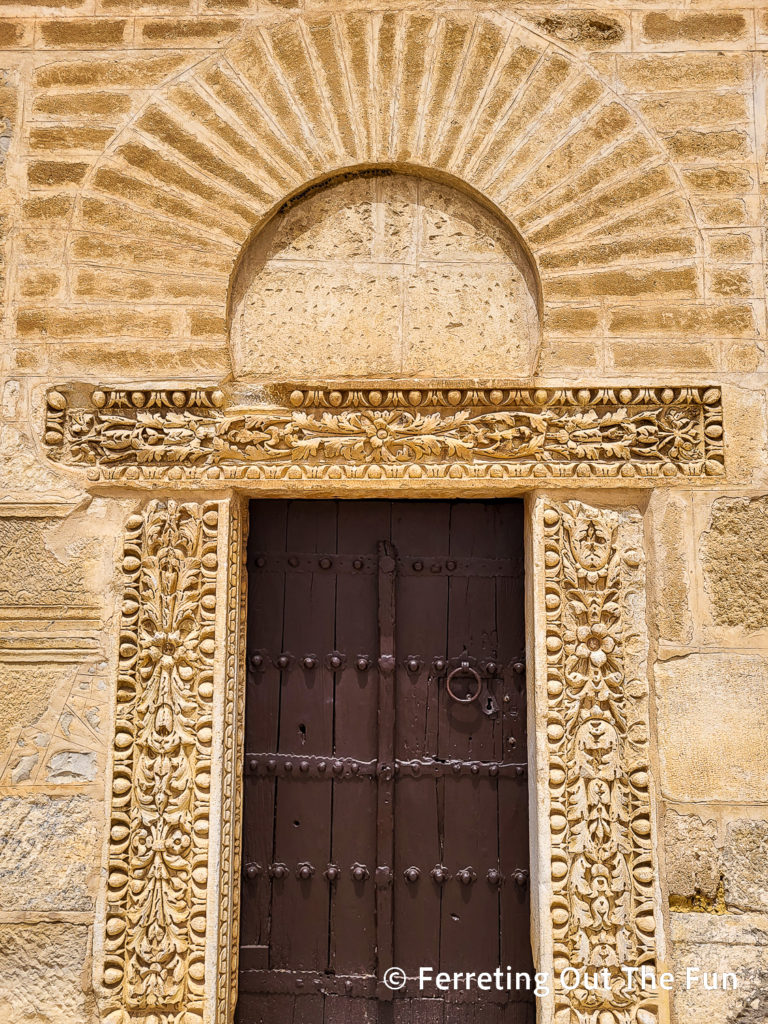
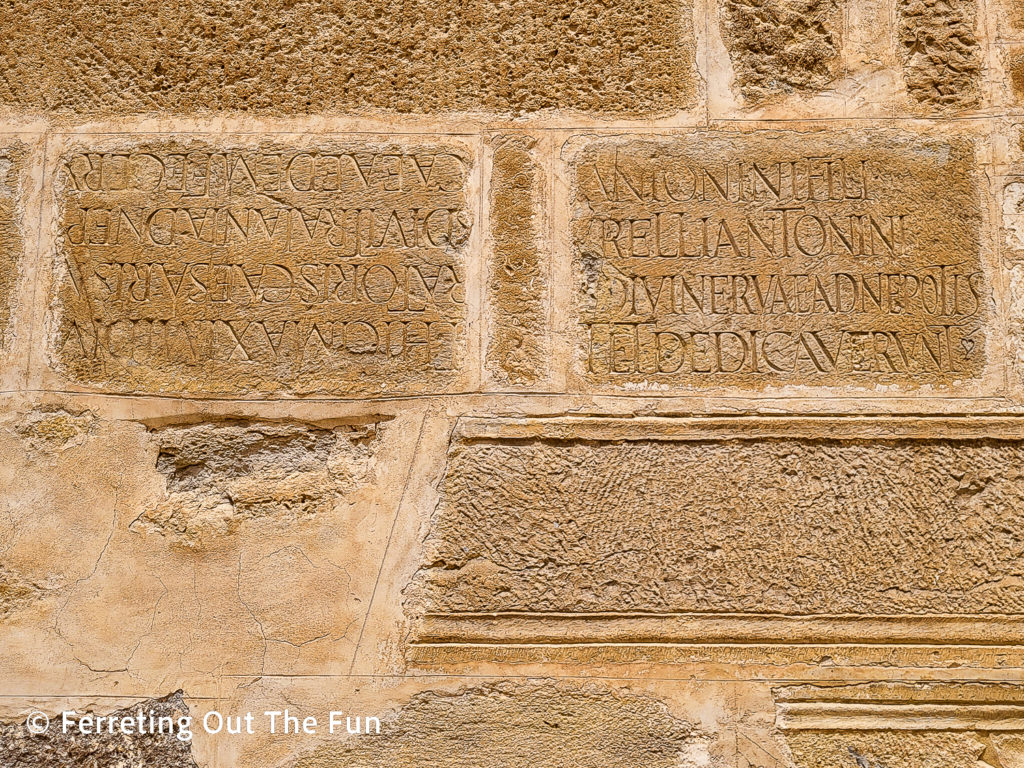
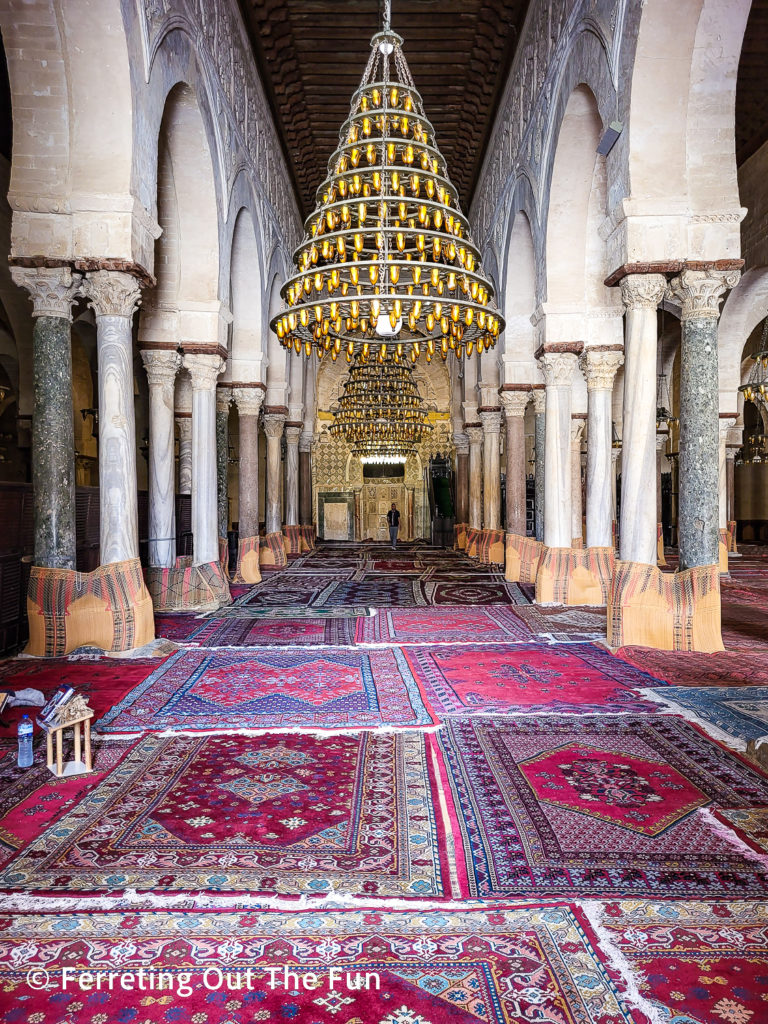
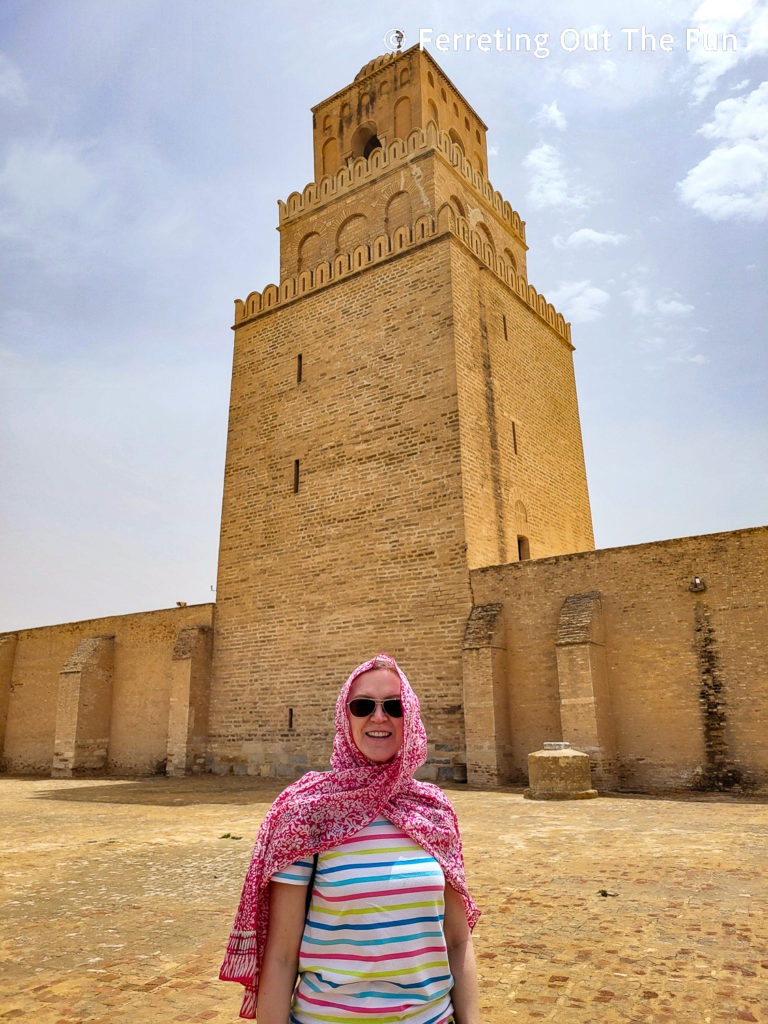
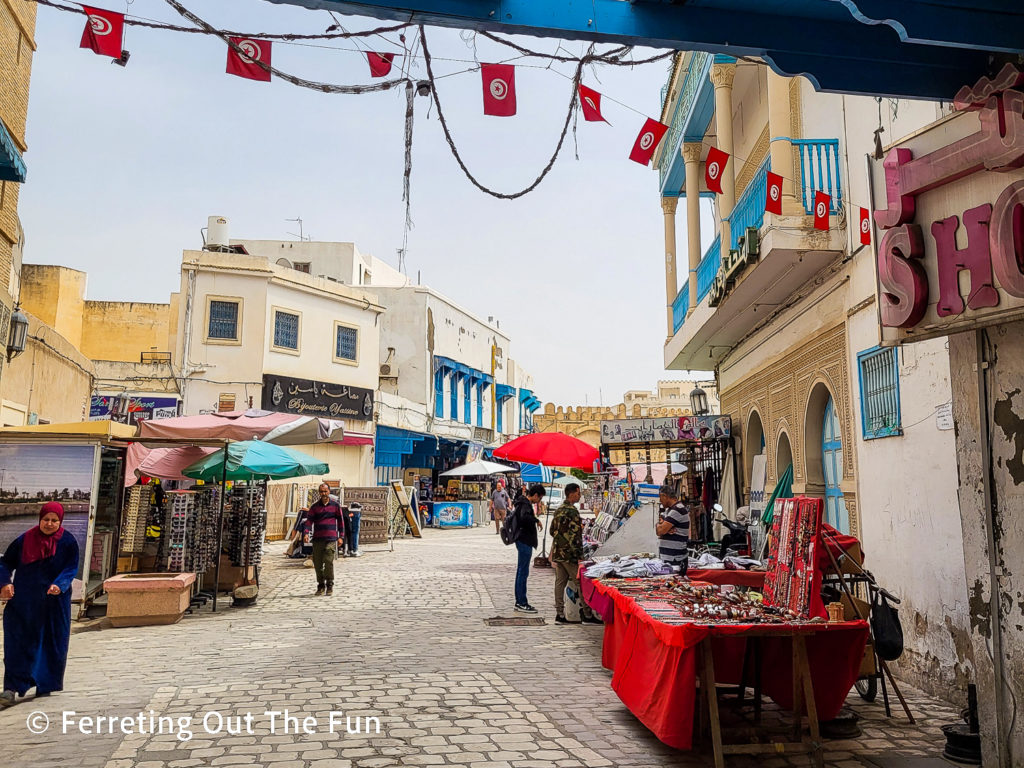
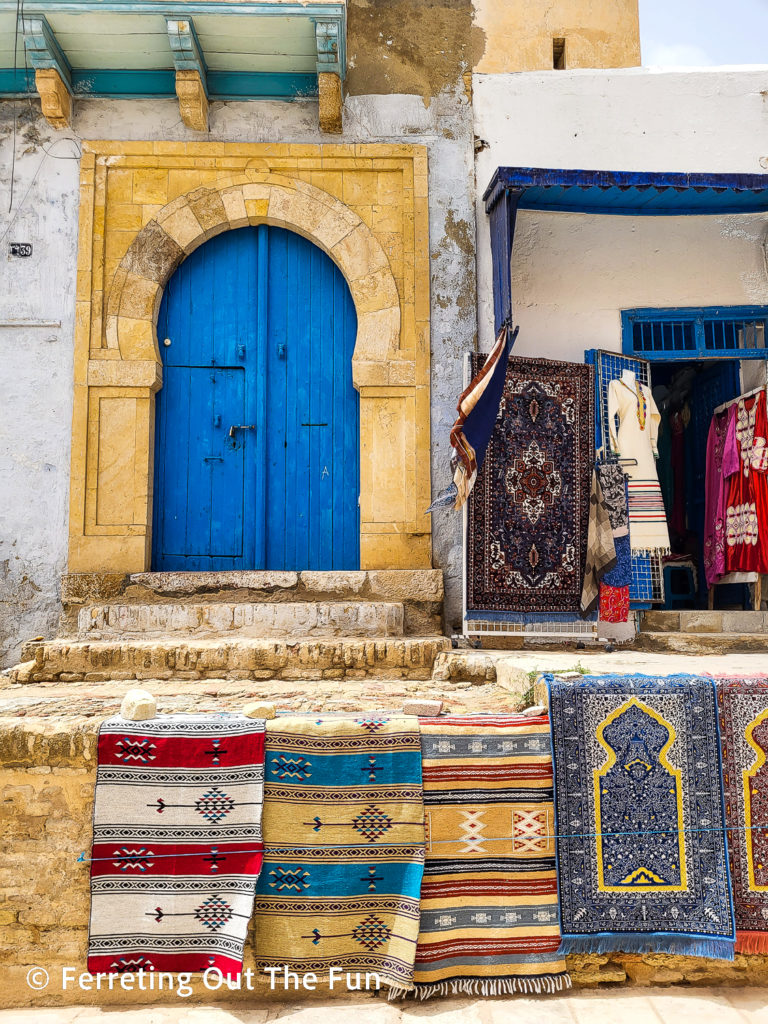
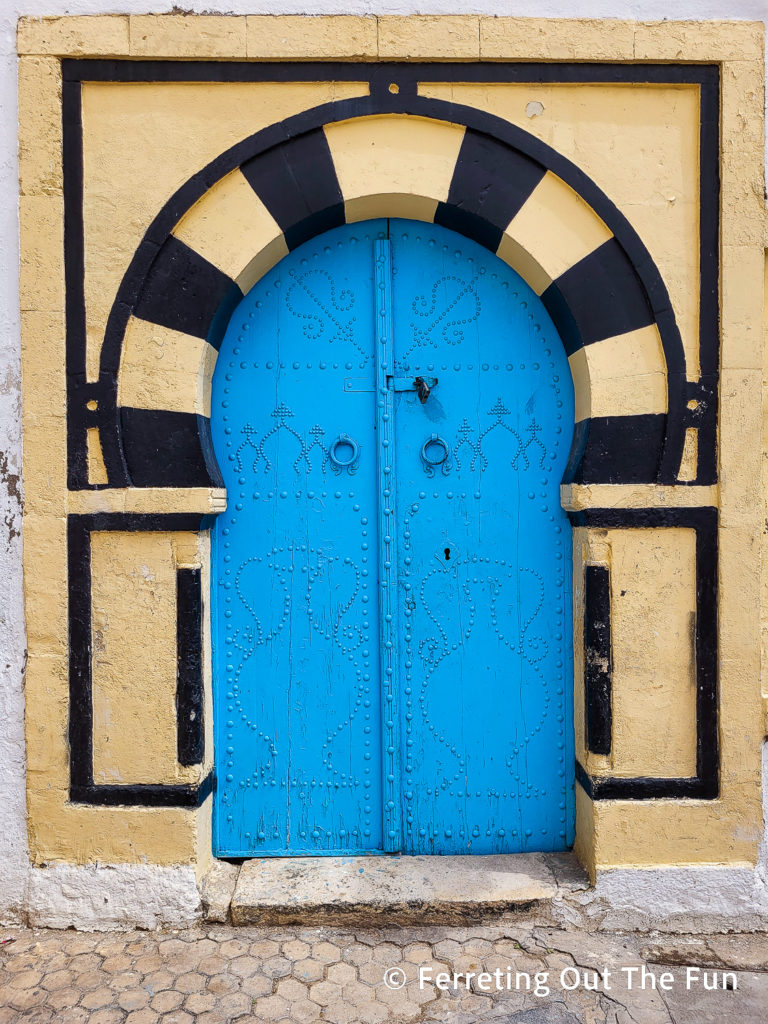
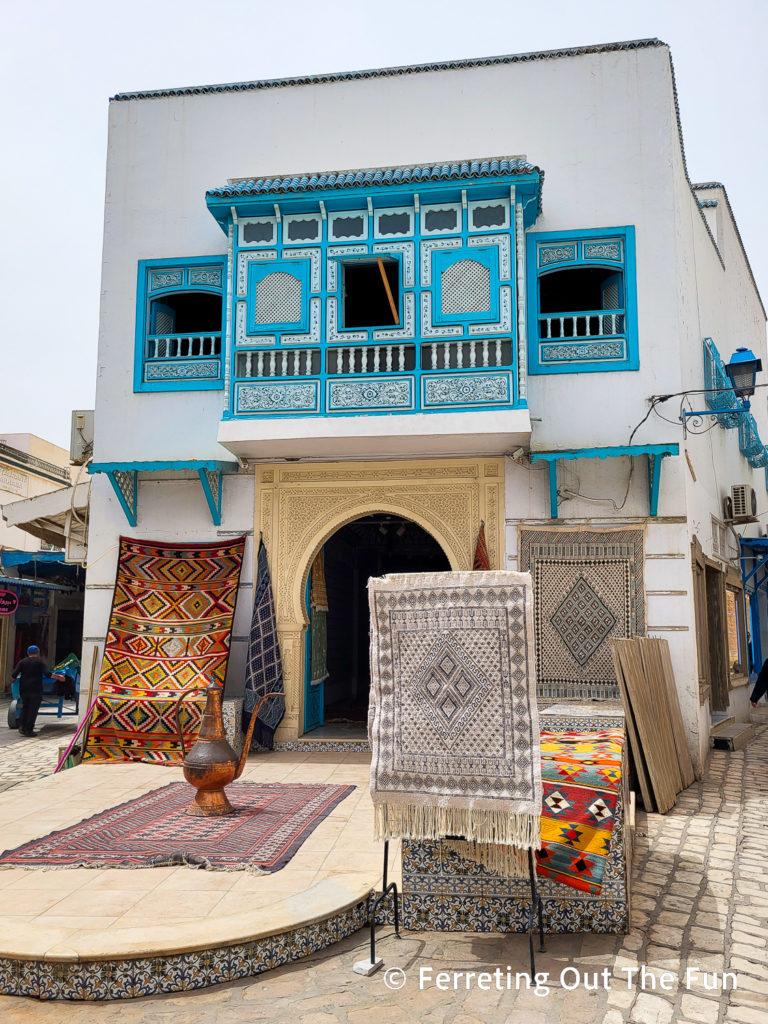
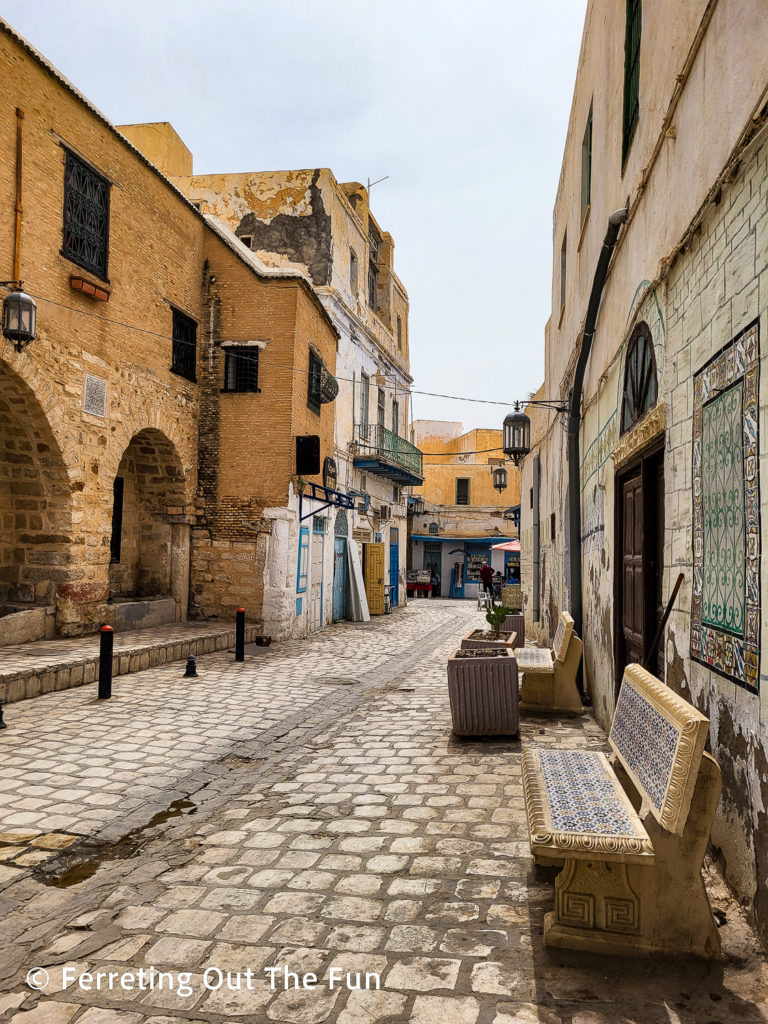
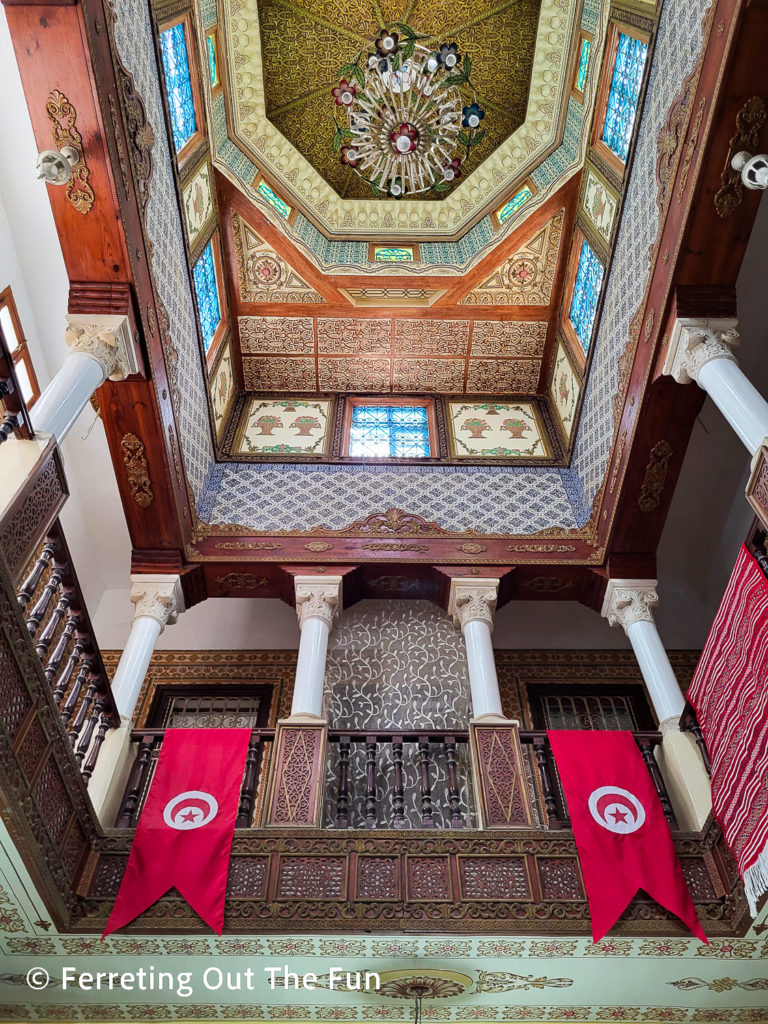
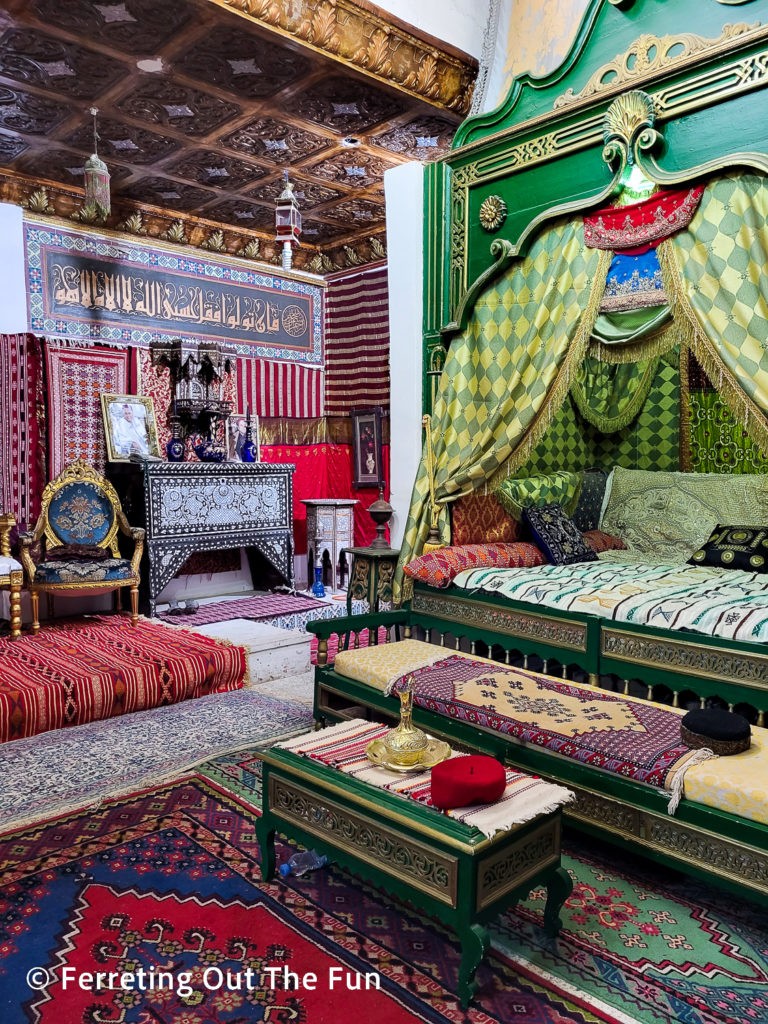
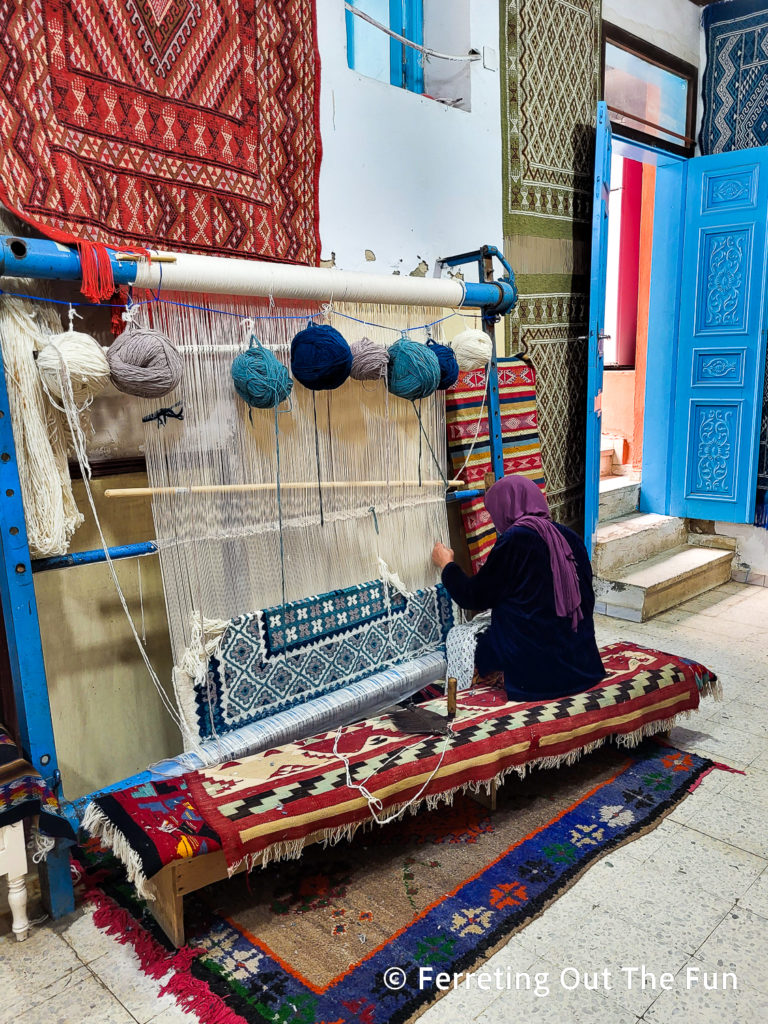
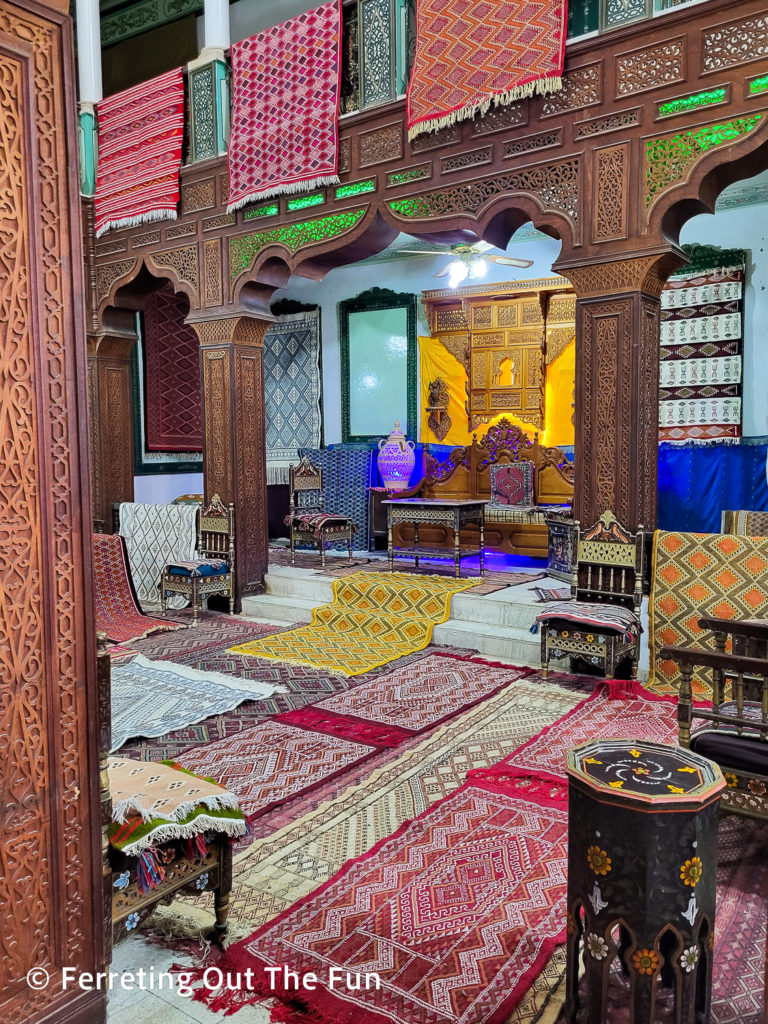
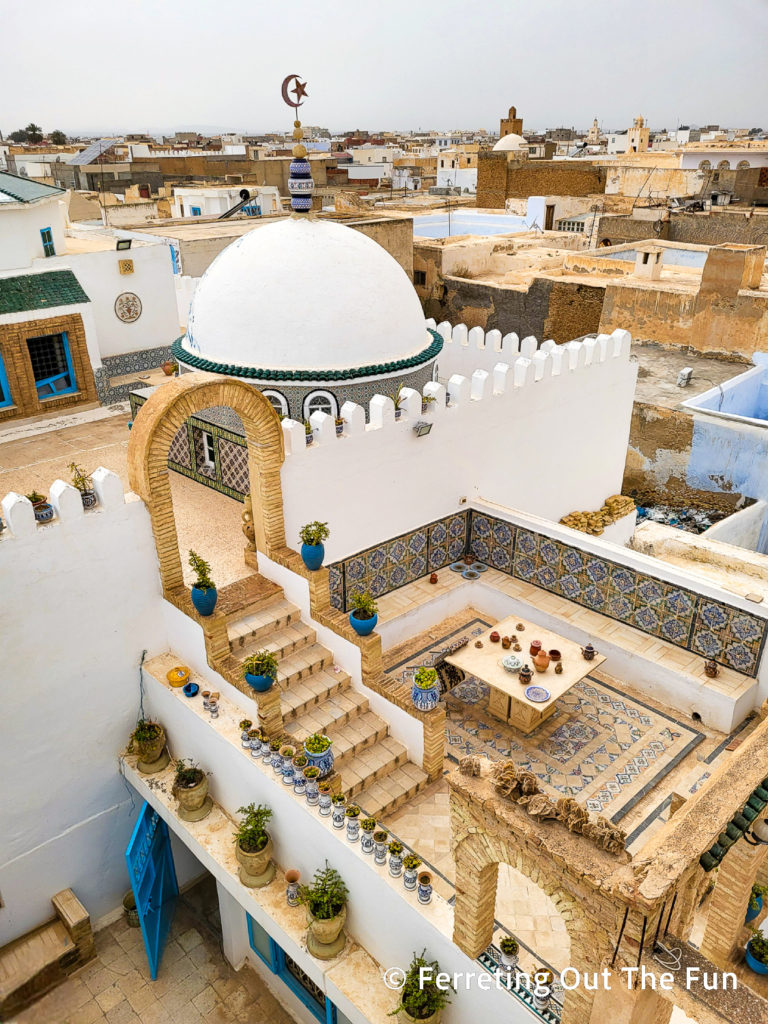
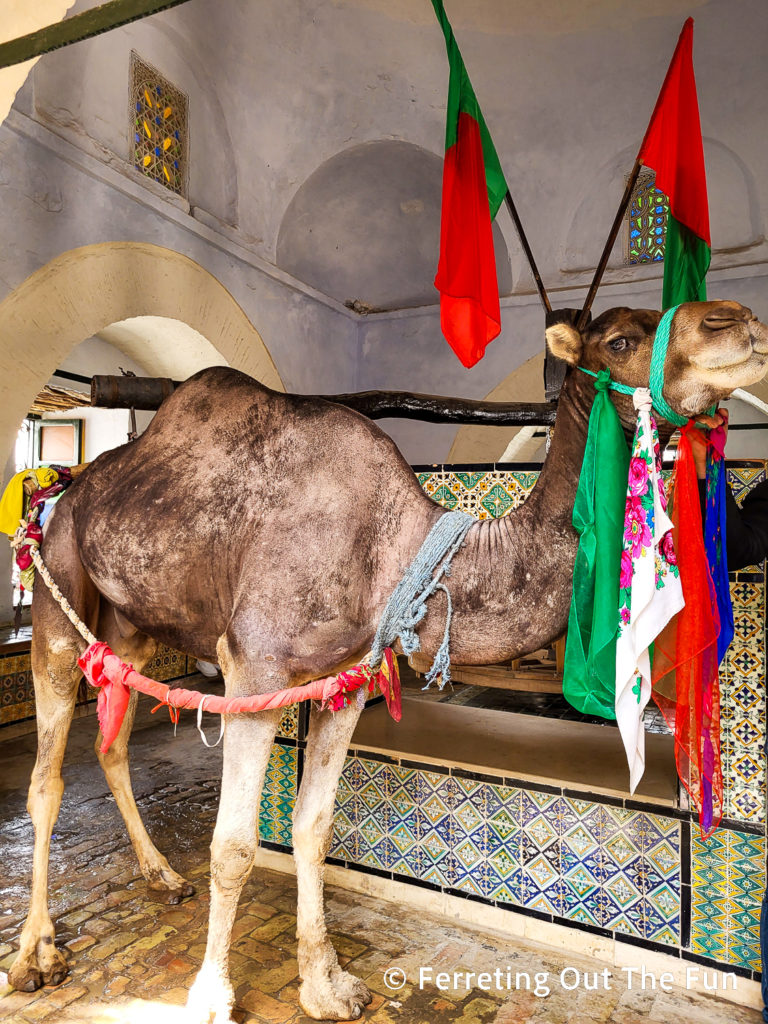
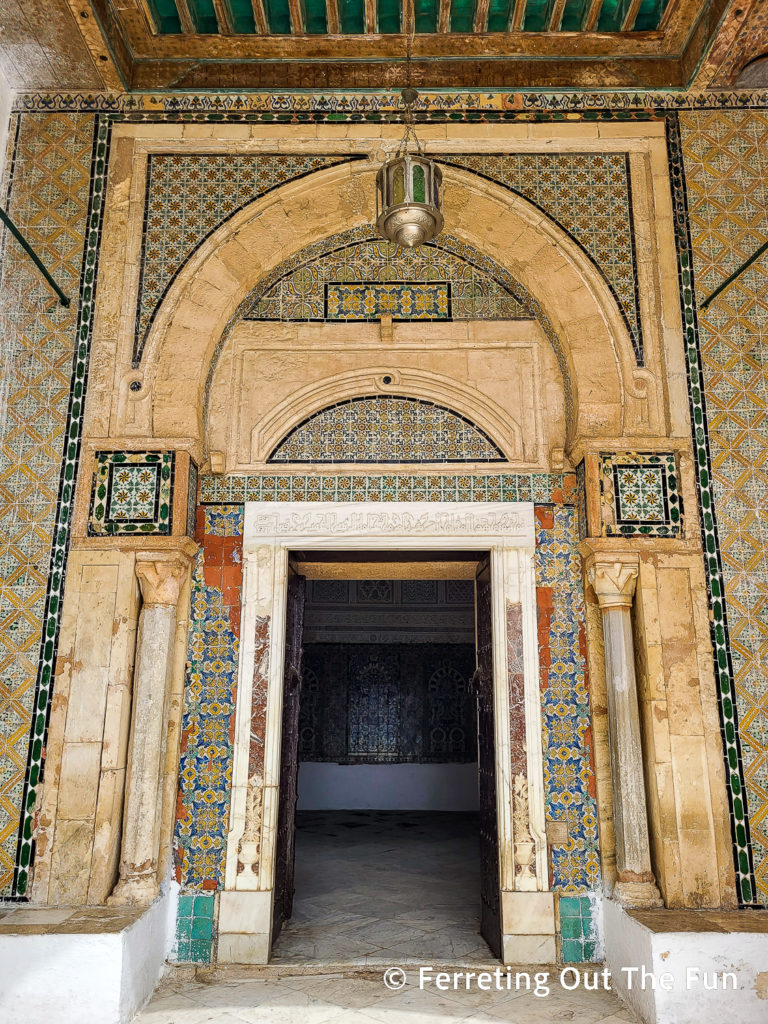
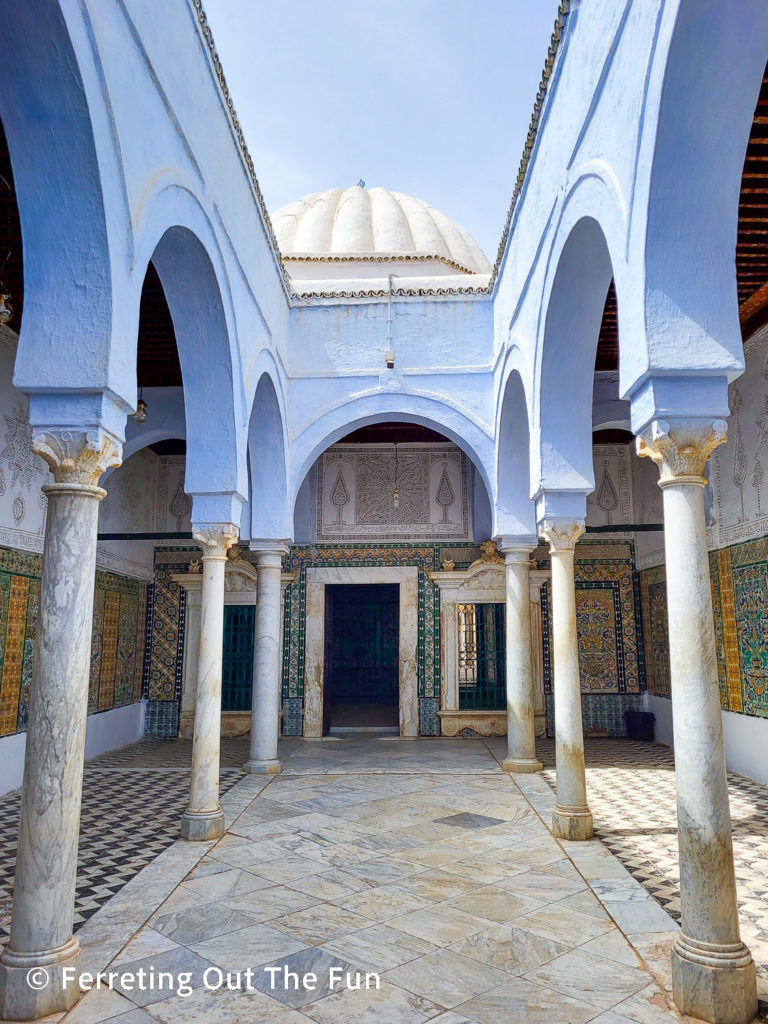
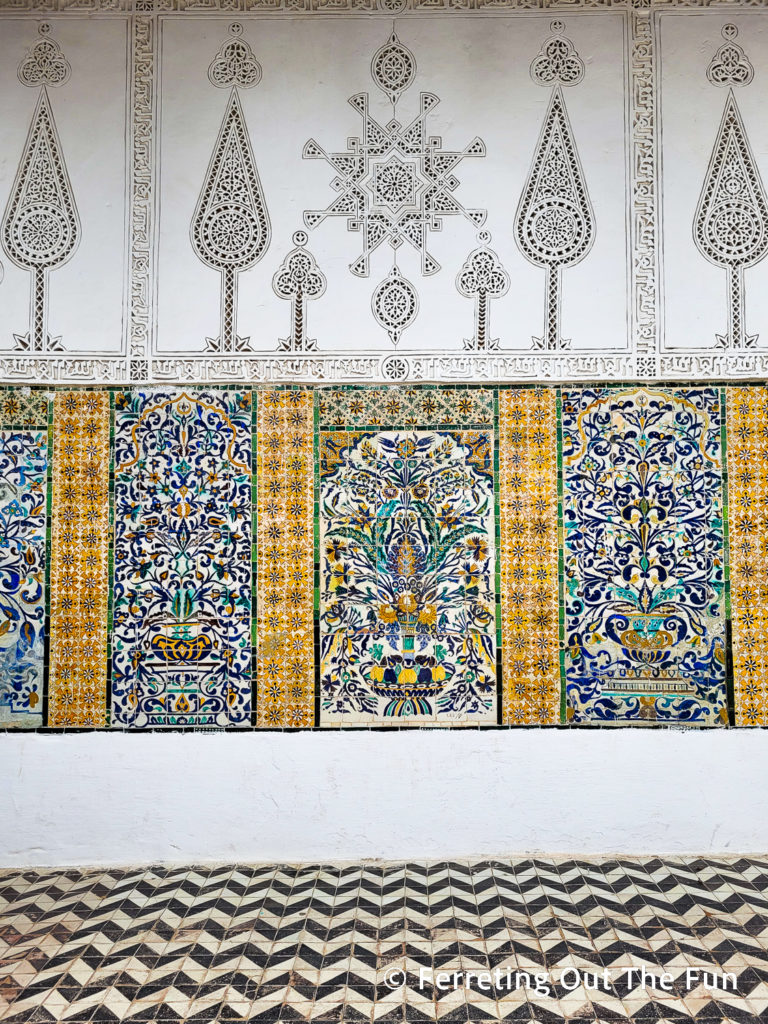
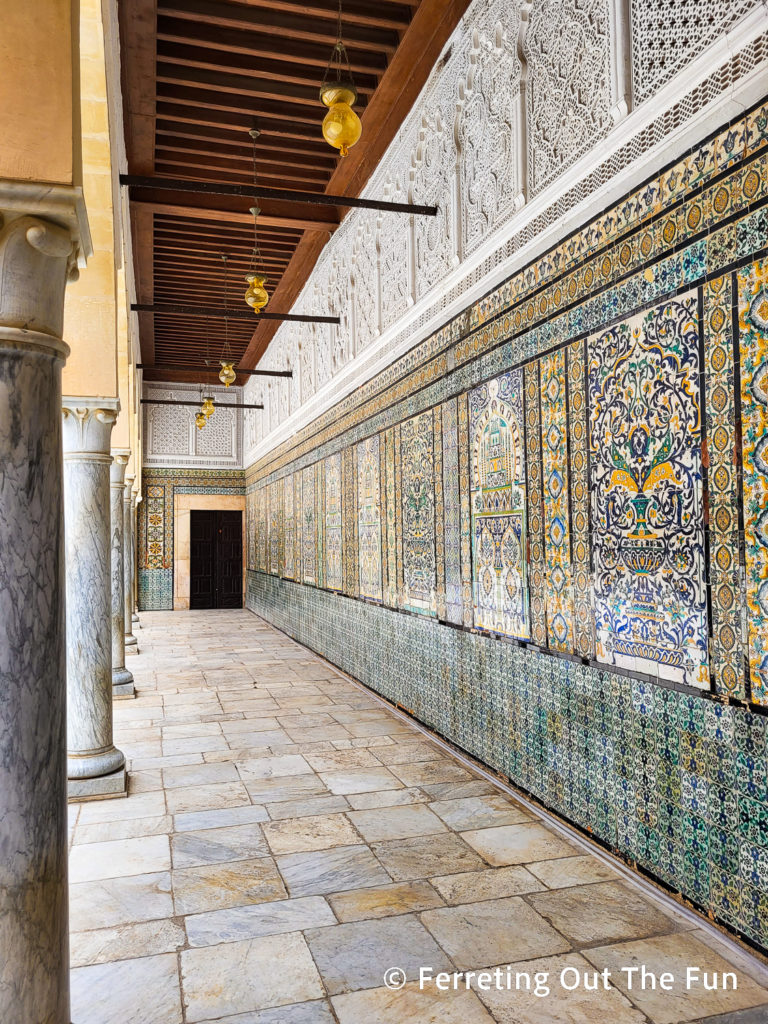
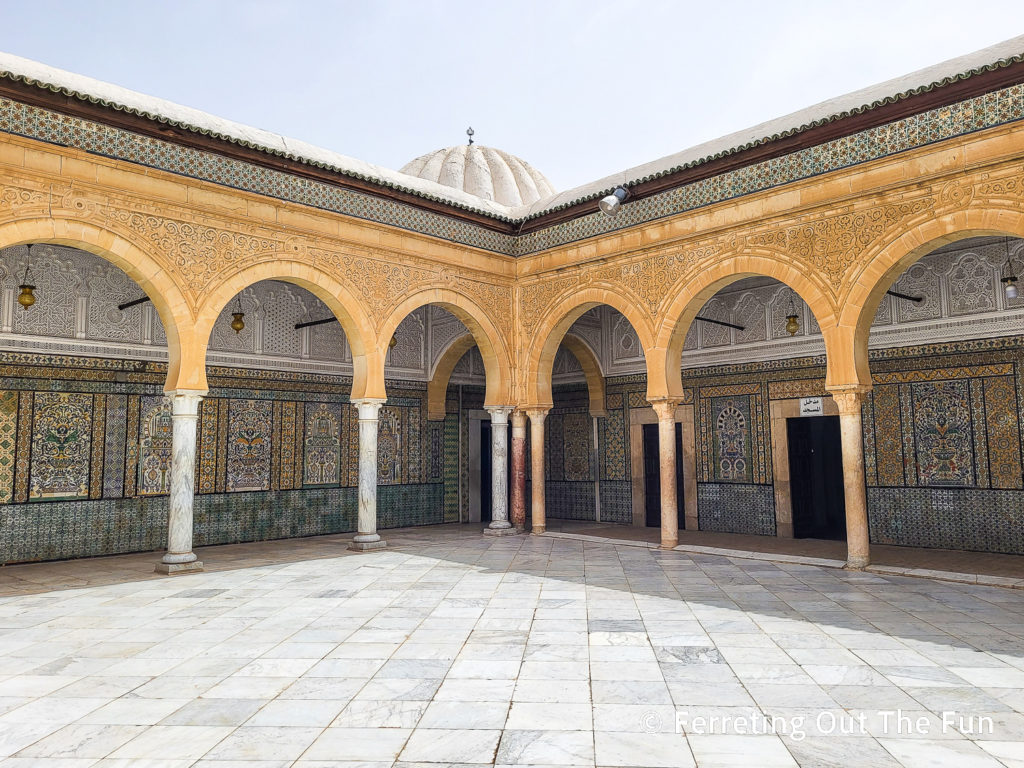
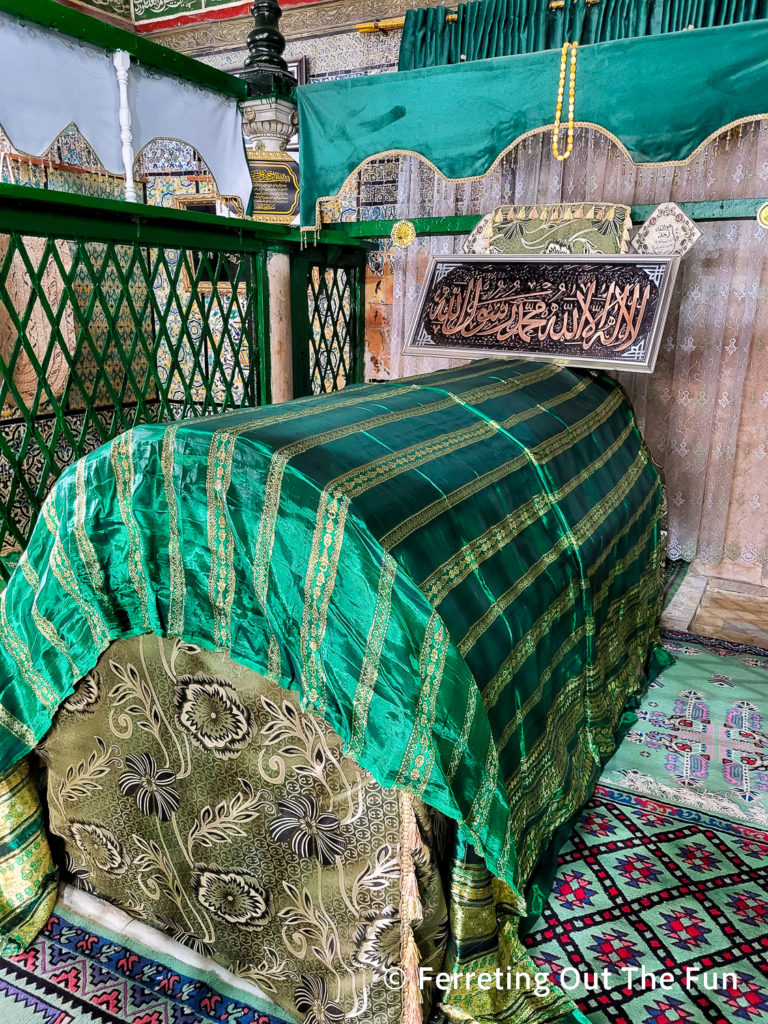
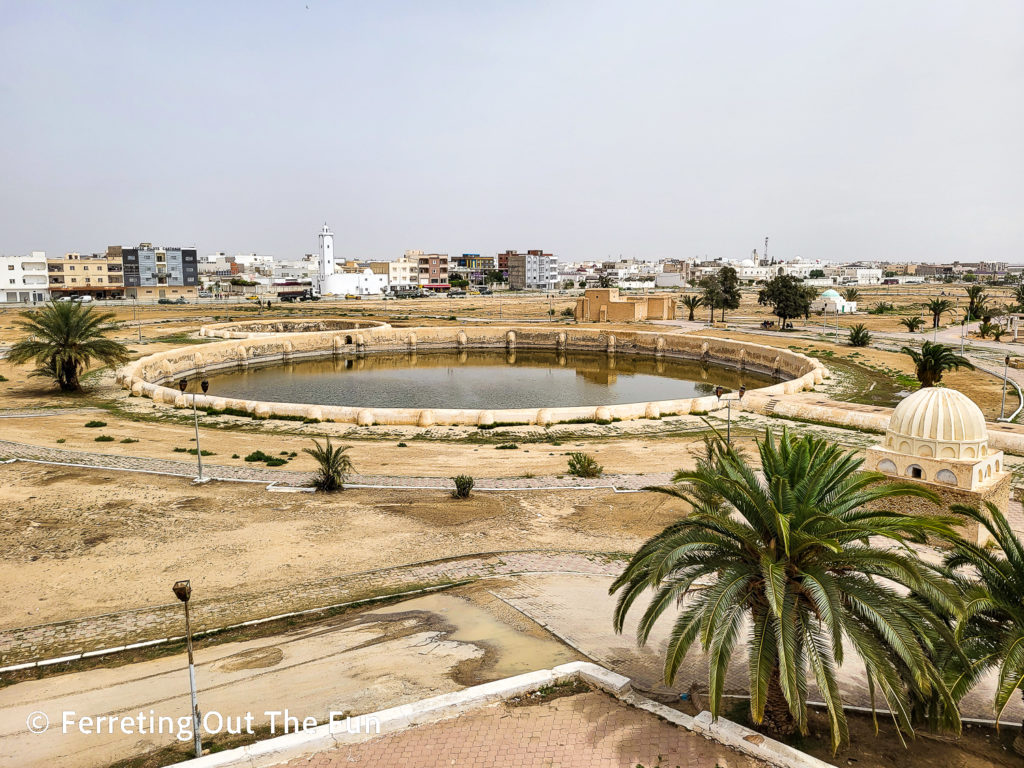
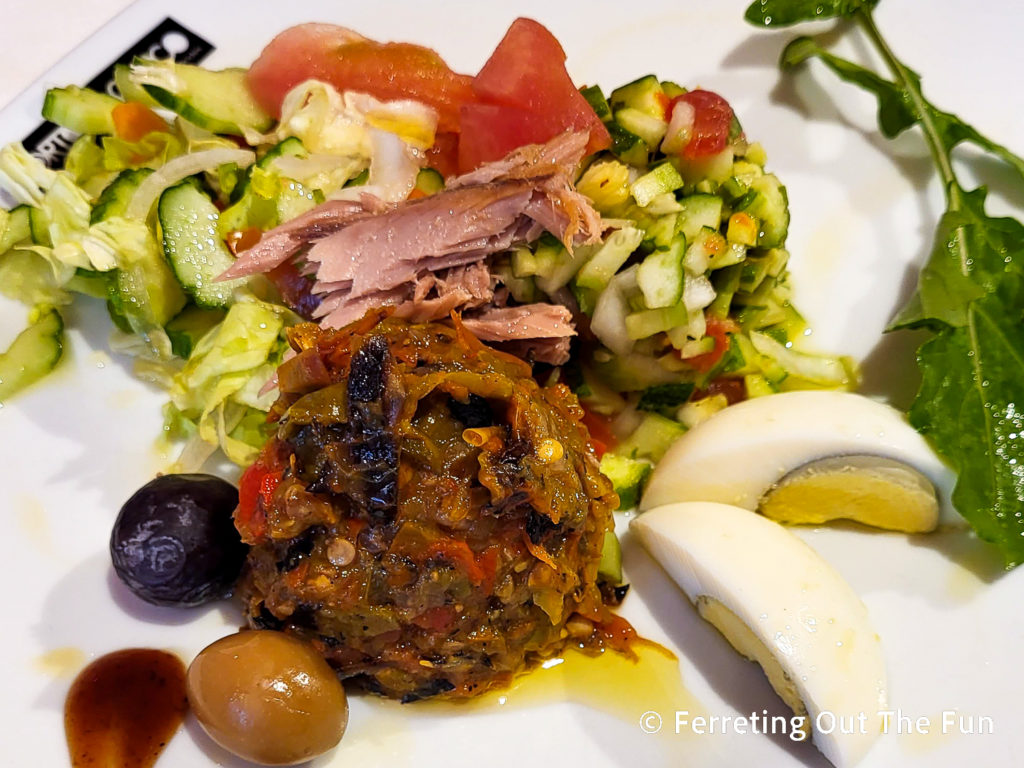
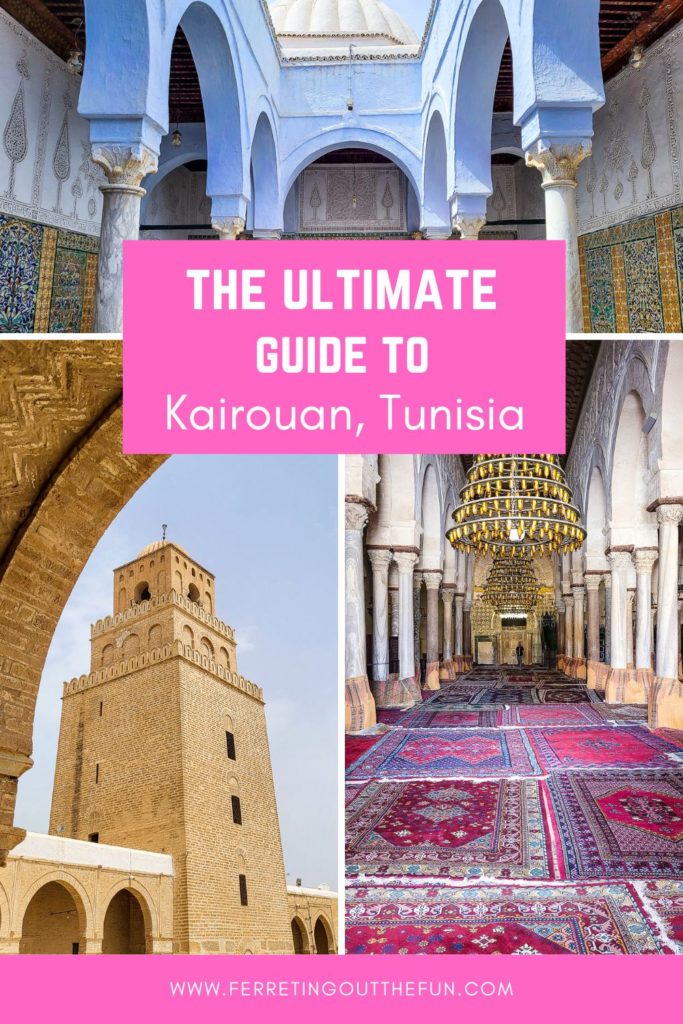
Thanks Heather for another interesting post. So many wonders in this world!
Celeste
Thank you, Celeste!
Thank you for your post, Heather!
I will visit Kairouan in November, can’t wait!
That’s nice to hear, I hope you have a wonderful time!